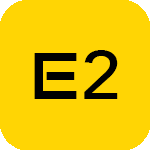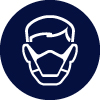E2 Photovoltaic Solar Panels

Photovoltaic Solar Panels Electrical 16 02 14
The treatment of all end-of-life Waste Electrical and Electronic Equipment (WEEE) including photovoltaic (PV) solar panels, is governed in England, Wales, Scotland and Northern Ireland by the WEEE Regulations 2013. These reflect the most recent amendments to the European Commission WEEE Directive. PV solar panels are manufactured in various sizes depending on their desired function and capacity to generate clean renewable energy from the sun. Some PVs contain hazardous components and materials that need specialist collection and treatment through appropriate and approved facilities - Dedicated Collection Facilities (DCFs). PV solar panels should only be landfilled as a last resort or if required by the WEEE Regulations. This DRIDS is for non-hazardous PV solar panels only; a separate DRIDS covers WEEE Items that contain hazardous components, materials, fluids or gases.
Usage & Probable Locations
There are two key types of PV solar panels: Crystalline Silicone PV and Thin Film PV. They are used to generate solar power from the sun and will be fixed to the outside of buildings, structures and infrastructure items. They will be located on roofs and occasionally walls of buildings or free-standing arrays on the ground. They may also be integrated with other building components including roof tiles and external cladding. They are increasingly used to provide power to remotely positioned electrical lighting or recording equipment.
Personal Protective Equipment
PPE requirements indicated are for guidance purposes only. DRIDS has identified the PPE that is mandatory on all demolition projects and ones that may be required subject to site specific Risk Assessment & Method Statement (RAMS). Hover over the icon to determine the types of PPE required for the removal of this material.
Removal, Segregation & Storage
PV solar panels that are destined for reuse (repair or reconditioning) or recycling should be deconstructed, segregated and transferred through an Approved Authorised Treatment Facility (AATF) or Dedicated Collection Facilities (DCFs) that uses Best Available Treatment Recovery and Recycling Techniques (BATRRT). Any hazardous materials and components present in the PV solar panel will be removed and properly treated according to strict Government Guidance and Regulation. Companies who produce more than 5 tonnes of non-household (Business to Business B2B) PV solar panels annually need to register with an approved Producer Compliance Scheme (PCS) such as PV Cycle UK. PV solar panels that are marked with a wheeled bin symbol are the responsibility of the Producer, whereas those without a wheeled bin symbol are the responsibility of the disposer.
Tools
Fixtures, Fittings & Connections
PV solar panels are mostly fixed in place or require a frame or stand. Most will be connected to a power system of sorts including AC, DC and batteries. Some PV solar panels are fixed in place using pin and socket connections, clips or fastenings to provide security within a frame or to other building products. Where required, PV solar panels will be fixed in place using a wide range of fixtures and fittings such as bolts, screws, pins, expansion bolts or adhesives.
Health & Safety
Subject to task-specific Risk Assessment & Method Statement (RAMS). Turn off electricity circuit before unplugging or removing PV solar panels. Use correct protective equipment when working with PV solar panels to prevent irritation, cuts and abrasion. Use eye protection when using hand tools to prevent glass in eyes if accidental breakage. Wash hands before eating, drinking or touching. Be alert to hazardous materials or components and their correct symbols in order to recognise and treat accordingly. Wear kevlar grip gloves when handling PV solar panels to prevent dropping them. Avoid breaking glass. Do not walk on PV solar panels. Use appropriate access equipment determined by RAMS.


















